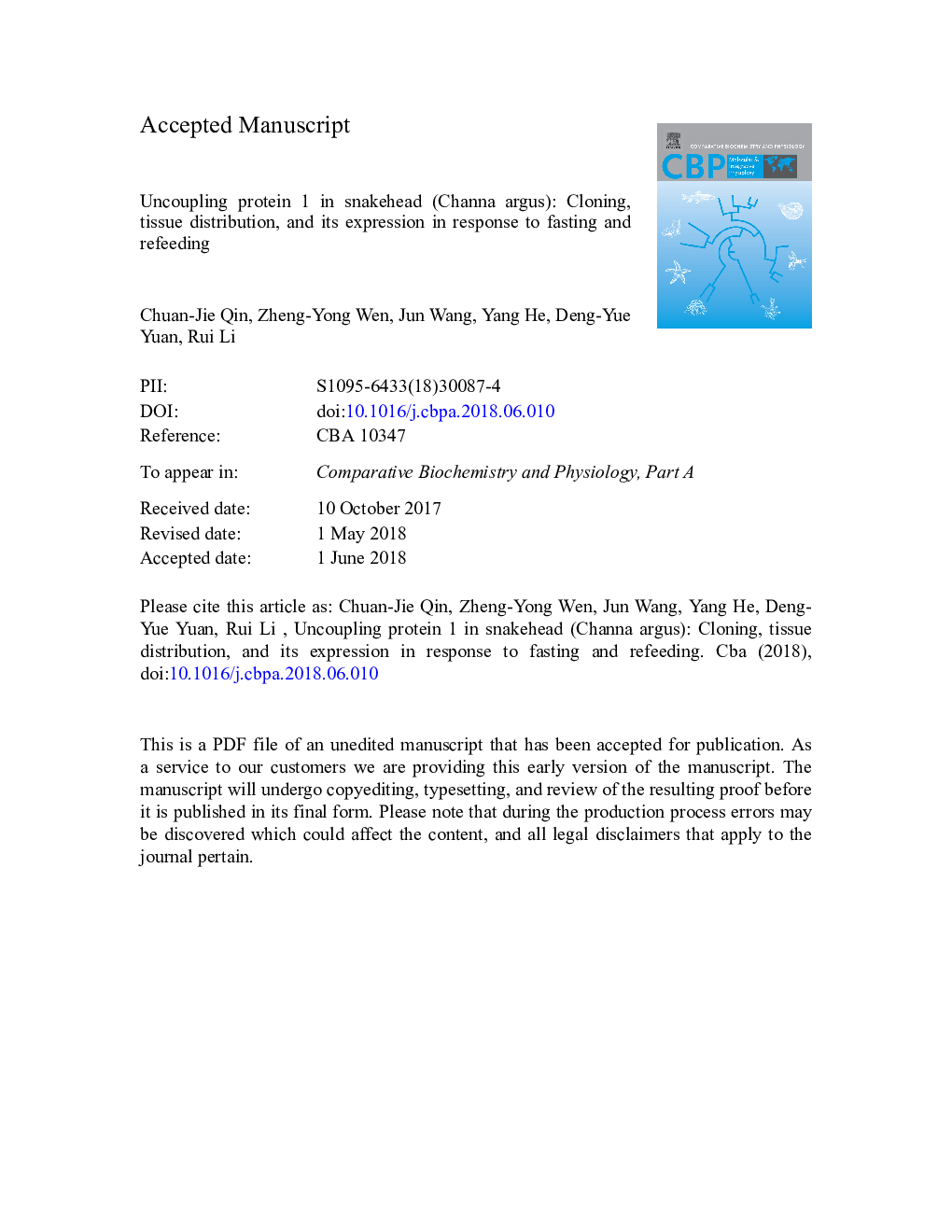| Article ID | Journal | Published Year | Pages | File Type |
|---|---|---|---|---|
| 8318032 | Comparative Biochemistry and Physiology Part A: Molecular & Integrative Physiology | 2018 | 26 Pages |
Abstract
In mammals, uncoupling protein 1 (UCP1) is well known for its thermogenic role in brown adipose tissue (BAT). However, the UCP1 physiological roles are still unclear in fish, although several teleost ucp1 genes have been identified. The aim of this study is to investigate the potential roles of fish UCP1 involved in food intake regulation and energy homeostasis. We herein report on the molecular cloning, tissue distribution and the effect of fasting and refeeding on the expression of ucp1 in Channa argus. UCP1 consisted of a 921â¯bp open reading frame predicted to encode 306 amino acids. Sequence analysis revealed that snakehead UCP1 was highly conserved (>80%) with teleost UCP1, but shared a lower identity (60-72%) with mammals. Phylogenetic analysis supported that snakehead UCP1 was closely related to piscine UCP1. In addition, ucp1 was found to extensively expressed in all detected tissues, with the highest level in liver. Futhermore, the hepatic ucp1 was found to significantly increased after short-term and long-term food deprivation, and dramatically increased following refeeding. These findings suggested that snakehead UCP1 might play important roles in food intake regulation and fatty acid metabolism in snakehead fish, and it could be as a potential target locus to improve commercial production of this kind of fish.
Related Topics
Life Sciences
Biochemistry, Genetics and Molecular Biology
Biochemistry
Authors
Chuan-Jie Qin, Zheng-Yong Wen, Jun Wang, Yang He, Deng-Yue Yuan, Rui Li,
